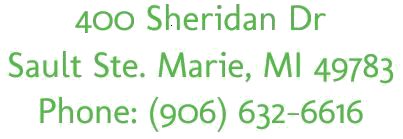Introduction
Thank you for your interest in weatherization in your community. Weatherization is a systematic repair process for an existing home based on a comprehensive energy audit, resulting in a defined scope of work designed to improve energy efficiency, reduce overall energy consumption and improve the overall indoor air quality and comfort of the structure.
Weatherization is part of Habitat’s broader community development strategy, the Neighborhood Revitalization Initiative.
NRI is designed to pursue our strategic imperative of helping to transform and strengthen communities so that those who reside in them will be able to live and grow into all that God intends for them.
About Weatherization
The weatherization program provides significant savings to low-income households, who typically spend a greater percentage of income on energy than median-income families. Through weatherization, homeowners are able to improve their homes by reducing financial burdens and living more comfortably. Families also are taught how to maintain their homes’ affordability through conservation tips. Weatherization is an extension of your core building program, enabling you to serve more families, and increase opportunities for volunteers. NRI was designed to formalize and broaden the type of programs offered by Habitat affiliates. Work has begun to transform existing neighborhoods by repairing rundown homes, rehabilitating foreclosed homes, and improving energy efficiency.
History of Weatherization
The oil crisis of 1973 dramatically affected most American homeowners, as their heating bills began to put a heavy burden on household budgets. During this period of steep increases in energy bills, many low-income families and senior citizens on fixed incomes were among those most seriously affected. The Department of Energy and several states sought a way to save on imported oil and cut heating bills. In 1976, Congress created the U.S. Department of Energy’s Weatherization Assistance Program under Title IV of the Energy Conservation and Production Act. Since that time, the Department of Energy has continued to expand the Weatherization Assistance Program, providing deep savings in energy and utility bills for families in need.
Many Habitat for Humanity affiliates are already working to address the needs of their local communities. This has often included adding repair and weatherization activities to their traditional new construction program. In 2009, Habitat for Humanity International partnered with Exelon Corp. in a pilot program designed to explore the implementation of weatherization by Habitat for Humanity affiliates. Using whole-house weatherization techniques, the pilot made improvements to the homes’ shell and heating and cooling systems that reduced the total amount of energy used. HFHI is building on the knowledge obtained in the pilot and is encouraging affliates across the country to expand their scope of services to include weatherization.
Benefits of Weatherization
Heating and cooling comprise nearly 40 percent of a home’s energy usage. Add in lighting, and it is more than 50 percent. Low-income households typically spend 17 percent of their total income in energy vs. 4 percent for other households. As a result, low-income families often choose between heat and other necessities. Habitat for Humanity seeks to lessen the amount of compromise that struggling homeowners make on a daily basis by providing quality weatherization services that result in real savings.
Weatherization efforts have been shown to effectively improve the heating and cooling systems in buildings that consume a large amount of energy per day. Experts have found that older structures were built with inefficient exterior and interior insulation, resulting in a lower energy performance for the overall infrastructure, and increased spending on wasted energy. Visit the Department of Energy: Energy Efficiency and Renewable Energy for more information on weatherization benefits and to find tools such as the Savers Guides.
Weatherization efforts are intended to make improvements in health, safety and energy efficiency, which results in lower energy bills for the families we serve. Depending on the level of weatherization repairs, a reduction in utility bills could range from 12 percent to 30 percent, saving thousands of dollars annually for low-income communities. By participating in weatherization, you have become part of a new movement to expand our capacity to help those in need of a safe and decent place to live. Your light will shine brighter in your community as people see the impact you’re having serving those in need by restoring hope and dignity to their lives.


